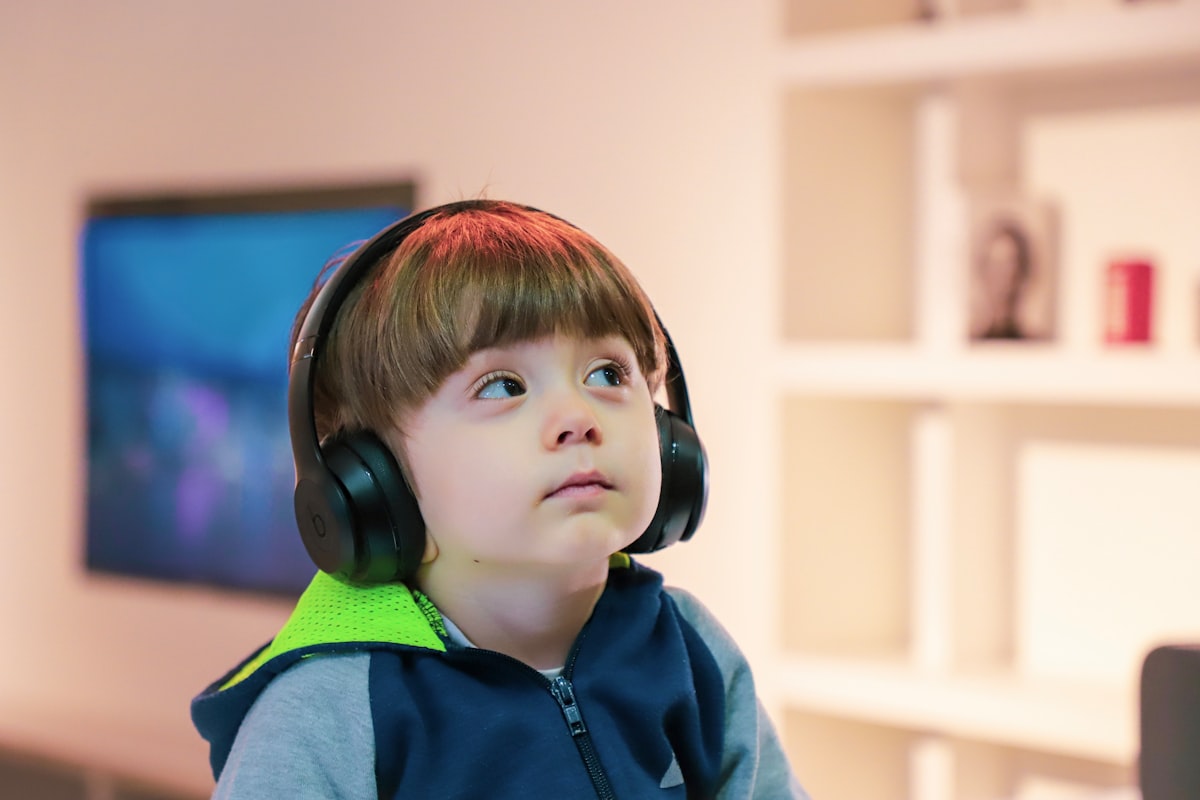Listening is the Most Critical Language Learning Skill, Here's Why
Unlock language fluency by mastering listening! Explore the science behind language acquisition and reshape your neural connections for success.

Introduction
As many dedicated language learners know, building fluency from scratch in a new foreign language poses an immense challenge. Between unfamiliar writing systems, tricky grammatical rules, strange new sounds, massive vocabulary lists, and cultural barriers - it's enough to make your head spin! It's normal to ask yourself why kids seem to soak up languages like sponges while even motivated adults seem to hit wall after wall.
The truth is, that language acquisition is less effortless and automatic than it looks. Yes, children do possess flexible brains primed for learning, not to mention plenty of time for exposure and daily practice. However, the key ingredients that enable their success also hold the secret for adult learners. This paper will argue that of all the moving parts involved with using language, listening ability is by far the most foundational skill to master.

The Communication Process
Effective communication involves a multi-step process: forming an idea, encoding it into words, speaking, listening, decoding meaning, and understanding. As language learners, we already have ideas and ways of conceptualizing the world. The main challenges center around speaking and listening in order to internalize and replicate the patterns of a new language. To know what to say and how to properly pronounce words, we must first know what fluent speech sounds like - something only possible through engaged listening.

The Impact of Hearing Loss on Language Development
Deaf children born to hearing parents enter the world without access to spoken language, instead relying on nonverbal communication. While this allows for shared attention and certain cognitive abilities, it does not provide the auditory input necessary for language development (Smith, 2021).
Even when hearing loss is identified early on and deaf children get assistance like hearing aids or sign language intervention, linguistic gaps persist. On average, deaf children have slower vocabulary growth across all stages of development compared to hearing peers. For example, the average 18-24 month old hearing child has a vocabulary of 300 words, whereas deaf children of the same age average just 70 words. Deaf adolescents also showcase poorer grammatical knowledge, particularly with complex syntax and morphemes like prefixes and verb tenses that carry meaning (Smith, 2021).
These lifelong challenges with language acquisition result from a lack of rich linguistic input during critical early developmental windows, leading to partial language deprivation. Promising solutions involve universal newborn hearing screens to catch deafness early, cochlear implants to provide sound sensations, and robust educational support to expose deaf children to as much communication as possible. However, individual differences still mean that most deaf people continue showing some degree of delay in vocabulary and English language mastery.
The conclusions remain clear - hearing spoken language from birth provides essential exposure to the patterns of grammar and speech sounds. Without this auditory input stream, children struggle to reach language milestones at a typical pace. Assistive technologies and early intervention programs can mitigate the impact, but there is no full substitute for an active listening experience.

Theoretical Support
This prioritization of hearing for language development aligns with 2 key theories of second language acquisition:
Input Hypothesis: Proposed by linguist Stephen Krashen, the input hypothesis states that we acquire language by understanding spoken or written messages that contain structures slightly beyond our current level (Krashen, 1989). This means input should be comprehensible but still challenging. For example, a beginner learner benefits most from simple content they can follow, while intermediate learners advance fastest with more complex grammar and vocabulary input. Without understandable input from listening and reading, language acquisition grinds to a halt.
Noticing Hypothesis: Created by Richard Schmidt, the noticing hypothesis suggests language learners must first consciously notice features of the input before those features can be acquired (Schmidt, 1990). As we pay attention to sound patterns, new vocabulary, grammar rules, and communication norms, our brains catalog these to inform speech production later. Getting quality input is useless if a learner isn’t actively noticing elements within it. Children absorb patterns easily because their brains automatically notice linguistic details. Adults must intentionally observe through mindful listening.
Theories centered around input and noticing in acquisition underscore why listening abilities enable learning. Listening provides that essential understandable input full of new vocabulary, idioms, pronunciation cues, and grammar structures. Effective listening also allows learners to consciously notice these patterns so they can be integrated and reproduced. Together, these processes of taking in comprehensive input and picking up on salient features accelerate language learning.

Internal Sound Systems
Fascinating research reveals that even those deaf from birth utilize a form of "phonological" coding to represent words they read on the page or communicate through signs (Sparks, et al., 2014). This refers to mapping visual input like text to abstract mental representations of speech sounds.
In a study comparing deaf and hearing participants memorizing Japanese symbols, researchers found both groups activated the left superior temporal gyrus - an area linked to phonological processing. This reveals an innate sound system that links visual patterns to meanings, even without external auditory input.
Specifically, when deaf participants memorized Japanese syllabaries, their brain activity mirrored that of hearing people hearing the corresponding sounds. The same phonological regions activated when deaf participants saw fingertip alphabets representing syllables, despite never hearing those speech sounds. This shows deaf individuals form internal surrogate sound representations by mapping lip movements and written letters to an abstract phonological code.
Such flexible cross-modal mapping allows the deaf to retain typical neural architecture for some aspects of language. However, the lack of precision from external auditory tuning still causes ongoing challenges with vocabulary, syntax, and pronunciation. For hearing second language learners, efficiently bolstering our internal speech sound network through listening remains essential to mimic native speakers.
The conclusions hold that early auditory deprivation impacts life-long language abilities even with compensatory strategies. Strengthening neurological connections between input symbols and phonological representations can mitigate this damage but not eliminate it. For those learning another language, maximizing listening experience is vital to properly construct the mental maps that enable fluent speech.

Conclusion
The ability to accurately recognize the sounds and patterns of fluent speech is a prerequisite for reproducing the pronunciation and grammar of a new language. As evidenced by research on those deaf from birth, lack of early auditory input causes cognitive deficits in phonological processing and verbal memory abilities that lead to lifelong language delays. Even with visual and gestural compensation strategies, achievement gaps persist without direct listening experience during critical developmental stages.
While any practice method can help build skills, targeted listening training is essential to develop an authentic internal model of the language. By continuously exposing our sound system to new input, we can slowly reshape our neural connections to mimic native speakers. As supported by the input and noticing hypotheses, comprehensible input combined with conscious attention to features allows us to absorb the vocabulary, idioms, grammar structures, and speech patterns unique to a language. Keep up the hard work in your language-learning journey by engaging your listening abilities to their fullest!

